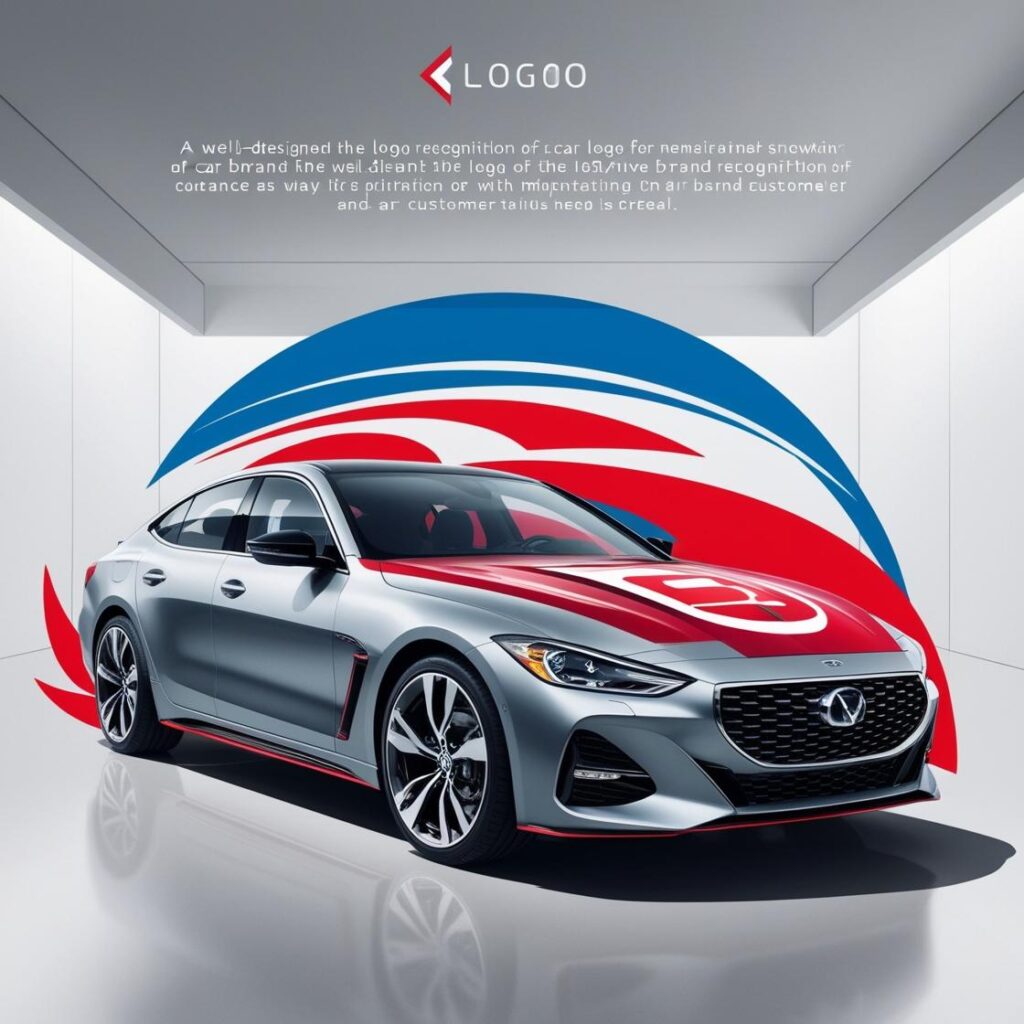The Importance of a Well-Designed Logo for Car Brands
December 1, 2024

In today’s competitive automotive market, a car brand’s logo is much more than a mere image; it is a critical element of its identity, encapsulating the brand’s values, heritage, and vision in an instant. It serves as a visual shorthand that signifies quality and reliability, and can even influence consumer behavior. In this blog post, we will explore the significance of a well-designed logo for car brands, examine iconic automotive logos, and delve into the principles of effective logo design specifically tailored for the automotive industry.

The Role of Logos in Brand Identity
1. Brand Recognition
A logo acts as a face of the company. The simpler and more memorable it is, the easier it is for consumers to remember and recognize it. Think of iconic brands like Toyota, Ford, or Mercedes-Benz. Their logos are instantly recognizable worldwide, making it easy for consumers to recall them when shopping for a vehicle.
2. Communicating Brand Values
A effective logo can communicate a brand’s mission, vision, and values. For instance, green car brands often use earth tones or nature-inspired designs that signify sustainability and eco-friendliness. In contrast, luxury brands such as Bentley use opulent colors and intricate designs to convey exclusivity and sophistication.
3. Emotional Connection
Logos can evoke emotions and foster connections with consumers. This connection is crucial in a market where brand loyalty can significantly influence purchasing decisions. A well-crafted logo can evoke feelings of trust, reliability, and prestige, all of which enhance a brand’s standing in the market.
4. Differentiation from Competitors
With a crowded marketplace featuring numerous car brands, a distinct logo helps set a company apart from its competitors. An effective logo will not only attract attention but continuously reinforce what makes the brand unique through its design elements.
Iconic Automotive Logos: What Makes Them Effective?

1. Toyota
The Toyota logo, featuring three intersecting ellipses, symbolizes the unification of the hearts of its customers and the company. The simplicity and symmetry of the logo reflect the brand’s commitment to innovation, reliability, and quality.
2. Ford
Ford’s logo, known for its stylish blue oval, represents America’s automotive heritage. The oval shape signifies unity and stability, while the bold font enhances readability. This logo has become synonymous with American strength and innovation.
3. Mercedes-Benz
The three-pointed star, emblematic of Mercedes-Benz, symbolizes the brand’s dominance over land, sea, and air. Its sleek design conveys luxury and performance. The logo complements the high-end positioning of the brand.
4. Tesla
Tesla’s logo, which features a stylized “T”, reflects innovation and a forward-thinking approach. The emblem is sleek and modern, echoing the brand’s values of cutting-edge technology and sustainability.
Key Principles of Effective Logo Design for Automotive Brands
1. Simplicity
A successful logo should be simple and easily recognizable. Overly complex designs can confuse consumers and are harder to remember. By limiting the details, brands can ensure their logo is versatile and can be effectively used across various mediums—from website headers to car branding.
2. Relevance
The design should resonate with the target audience and reflect the core principles of the brand. A sports car manufacturer, for example, might choose a dynamic logo featuring sharp angles to reflect speed and performance, while a family-oriented company might adopt a softer, rounded design indicative of safety and comfort.
3. Versatility
An effective automotive logo should work across multiple platforms, from digital environments to physical products. Brands often face the need to downsize their logos for social media icons or scale them up for vehicle branding, making versatility a crucial factor in the design process.
4. Timelessness
While trends in design may come and go, a brand logo should have a timeless quality to remain relevant for years to come. Iconic logos endure the test of time and require minimal updates to stay contemporary without losing their essence.
5. Color Psychology
Colors evoke different emotions and associations, which can heavily impact consumer perception. For example, blue evokes feelings of trust and reliability, making it a popular choice among automotive brands, while red can symbolize energy and excitement. Understanding color psychology is crucial to developing a successful logo.
Conclusion: The Lasting Impact of an Automotive Logo
The world of automotive branding is evolving, influenced by factors such as technological advancements and changing consumer preferences. However, the significance of a well-designed logo remains steadfast. A logo is not just a representation of a car brand; it is a bridge connecting the brand’s values with its audience, a visual language that transcends borders, and a pivotal piece of marketing strategy.
As the automotive landscape continues to evolve, companies must ensure their logo reflects not just who they are today but also where they aspire to go in the future. Whether fostering loyalty among existing customers or enticing new buyers, a strong logo can pave the way for success in a competitive and ever-changing industry.
As consumers, the next time you glance at a car logo, consider not just the design but the story, values, and emotions it encapsulates, and remember the integral role it plays in the world of automotive branding.